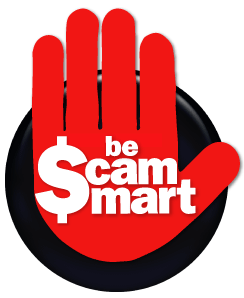]]>
- Always research the other party
Who are you dealing with? Is it a
legitimate business registered somewhere? Use the Internet to your advantage.
The fraudsters did research on you, your contact information; why not do the
same to them? Checking for validity is very simple, a WHOIS on their domain
name, or a simple search on the Internet (Google, Yahoo search) for their
business name. Include the word “scam”, “fraud” into the query to specifically
ask for negative results and if you could not find any relevant results then it
could be they are really legitimate or they have changed their names, use
another email address, use another company name or you are being worked by a new
(not necessary inexperienced) scammer. - Think of the worst-case scenarios
Imagine these scenarios and
figure how you should deal with it. When receiving money, ask yourself the
questions: can they charge back or reverse the charge? If they can dispute the
charge, do you have documents to back up your claim? When sending money, ask
yourself if anything could go wrong during the transactions (paid and nothing
change hands, shipped but never get to the destination, dead on arrival) - Do not believe anything you see and hear in the reply
Even if the
fraudster refers you to another company that looks legitimate, these companies
might be in the same scheme or the other company is also a victim and does not
know their credibility is on the line. If in doubt, contact the other company to
verify if this person is actually registered, licensed to do business with
them. - Don’t send money because you are going to receive more money
later
This is a classic and yet general scheme that could apply to any
field. Someone sends you a check for $6,500 USD and asks to get $500 back
because they mistakenly added $500 extra. Someone asks you to pay for a domain
appraisal certificate, a trademark search at a specific company before agreeing
to buy your domain name for 5 grands. - Use visual cues, pay attention to details
The first thing, the
payment form has to be in a secure page (SSL-encrypted, showing a lock or yellow
address bar). When you receive a link to the payment site, try to visit some
other parts of the site, see if there is any content or just the form to set you
up. Check out for irregularities, unprofessional details (broken links,
misspelled words). These little things could trigger a potential larger problem
and raise your awareness/alert for the whole situation - Be a little paranoid, never let your guard down
Face-to-face (or
on-the-phone) frauds and scams require a more professional breed. Online scams
are much easier to pull off and therefore you’re more likely to be tricked
online than offline. - If it is too good to be true, it probably is
You think you’re in
for an amazing deal, it could be either these two cases. You’re a talented
investor, deal-hunter with proven track record in the past OR you have no clue
and someone is playing tricks to get your money. - When in doubt, check it out
If there is any sign of problem, step
back, stop the transactions if it’s not too late and verify/confirm your
doubts/assumptions (call someone for verification, call your bank, ask for
additional support documents). If you think these steps are time-consuming,
think about how much time, money, effort it would take to recover from a
charge-back, dispute and emotional distress once you become the victim. - Choose the right payment method
There are many ways you can send
and receive money online. Use the ones you’re most comfortable and have
previously experienced/dealt with. Checks could be fake and returned with charge
back to your account later. PayPal payments by unverified, non-insured sender or
by credit card, can also be charged back later (many cases up to 90 days). Even
though you might think for PayPal to accept the payment, the transaction should
have passed a rigorous fraud check, it might not be the case. Using an escrow
service sounds safe but it depends on the service credibility. If they are
licensed or accredited by a trusted source or they are just a random shop just
opened a couple month ago. - Have some detective fun
In the first contact, it could be hard to
tell/confirm their validity. Go ahead and ask for more information, confirm your
doubt, get them talking, pretend to follow their scheme but do not send them
what they want (money or merchandise). Stop and let them know when it get to the
point it is such an obvious scam. You can then share the experience with other
online users to help people from falling into the same scam or use the evidence
to help the police during the investigation.
For those who could
not believe why people are doing bad things on the Internet and do not think it
is an serious issue. Remember, there are good and bad people, anywhere, online,
offline. Scamming, ripping people off is their business and that’s what they do
full-time for a living. I hope as more and more people are aware and educated
about these fraud schemes, these guys might have to work part-time or better yet
become unemployed. I hope this article has been useful for those who are smart
enough to smell a stinky con operation and go search the Internet for
confirmation.
Now it’s time to report a recent scam. Take an example,
this person contacted me (and many other domain owners as reported here and here) to show great interests in one of my domains. He offered
to pay a great price but required an appraisal certificate from
allfordomains.com that I believe is in the same fraud team







